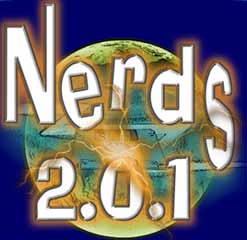from Prof. W. Tim G. Richardson

| Internet
and WWW History
from Prof. W. Tim G. Richardson |
 |
| . | There
is a purpose in giving you information and links to learn about the origins
of the Internet and WWW.
At the time of this course (Sept - Dec 2001) many significant changes continue to take place in the further development of the internet (eg. mobile and wireless internet) So,
the purpose in giving you information and links to learn about the origins
of the Internet and WWW is to equip you with an understanding which will
help you personally judge the immediate future events and activities so
that you may be better able, as a student and later as a business person,
to evaluate particular situations and judge whether to use, or not use,
learn or not learn, spend money or save money, as these develop.
|
| . | http://www.livinginternet.com/
One
Page summary on the Military / Academic
"In 1957, the Soviet Union
launched the first satellite, Sputnik I, triggering the US military to
create the DARPA agency to regain the technological lead ...
"DARPA worked on developing
technologies to protect the US against a space-based nuclear attack.
"The ARPANET first went live
in October, 1969, with communications between the University of California
at Los Angeles and the Stanford Research Institute. The first networking
protocol used on the ARPANET was the Network Control Program. In 1983,
it was replaced with the TCP/IP protocol
The people who founded the
Internet and WWW
|
Chapter 2

Chapter 2 
|
TCP / IP
"The two protocols that support
the basic operations of the Internet are the Transmission Control Protocol
(TCP) and the Internet Protocol (IP). Developed by Internet pioneers
Vincent Cerf and Bob Kahn, these protocols establish fundamental rules
about how data are moved across networks and how networks are established
and broken". These protocols are commonly referred to as
TCP/IP.
"The development of the TCP/IP
protocol in the history of the Internet is so significant that many people
consider Vint Cerf to be the father of the Internet"
Read page 73 in Andrew's book i-Net+ Guide "How TCP/IP Routing works" |
Dr. Vinton Cerf

Dr. Vinton Cerf
|
read the answer on Cerf's site at http://www.wcom.com/about_the_company/cerfs_up/internet_history/whatIs.phtml
|
| ARPANET
Chapter 2
|
ARPANET
the earliest packet-switched network connected a few universities and research centers Schneider and Perry page 36 "The open architecture philosophy
developed for the evolving ARPANET, which later became the Internet, included
four key points that have contributed to the success of the Internet"
|
 |
Video
which may be shown in class 1
- "revenge of the Nerds 2.0.1" - origins of the Internet - companion web site is at http://www.pbs.org/opb/nerds2.0.1/ - we will show a video in class which is part of the PBS TV program based on this web site - you are encouraged to review the web site in advance - information from the video and website will be part of the questions in Test 1 - glossary of geek http://www.pbs.org/opb/nerds2.0.1/geek_glossary/
In the video we show in the first class, we discuss Tim Berners-Lee - origins
of the WWW
A list of all the people mentioned in the video is at www.pbs.org/opb/nerds2.0.1/cast/ |
|
| Is the
Internet
and the WWW the greatest invention to effect business of all time? Is the Internet
Is the Internet
Is the Internet
Is the Internet
|
|
||||